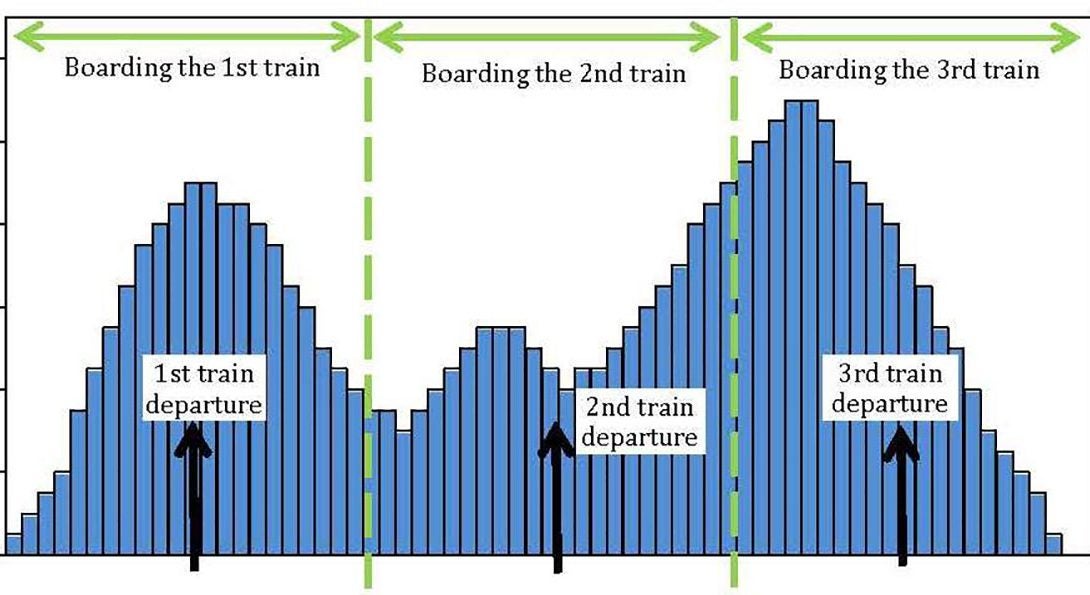Research Project
Integrated Modeling of High Performance Passenger and Freight Train Operation Planning on Shared Use Rail Corridors: A Focus on the US Context

This paper studies strategic level train operation planning on shared use passenger and freight rail corridors. We explicitly consider passenger schedule delay and freight foregone demand as a function of train schedules, which are largely ignored in previous research. In particular, incorporating passenger schedule delay makes the passenger train scheduling a quadratic integer programming problem.
- Principal Investigator
- Zou, Bo
- Research Area(s)
- Freight
- Policy Analysis
- Funding Source
- Metropolitan Transportation Support Initiative (METSI)
Abstract
Passenger rail has been resurging in the United States over the past decade. Amtrak, the primary intercity rail service provider in the US, has witnessed continuous ridership growth (except for 2009 due to the economic recession) from 20.9 million to 31.6 million passengers, or 51.1% increase, between 2000 and 2013 (Amtrak, 2013). To sustain this trend which promotes sustainability and multimodality at the same time in inter-city travel, several states have been pursuing higher performance rail systems, in the forms of High Speed Rail (HSR) services on new or existing corridors. The higher speed trains often share the use of tracks with freight trains, and the tracks are, in most cases, owned and maintained by freight railroads. The mixed operations give rise to the issue of capacity constraints, as manifested by the non-trivial delays reported by Amtrak and freight trains on shared use corridors. Download the "Integrated Modeling of High Performance Passenger and Freight Train Operation Planning on Shared Use Rail Corridors: A Focus on the US Context" report.